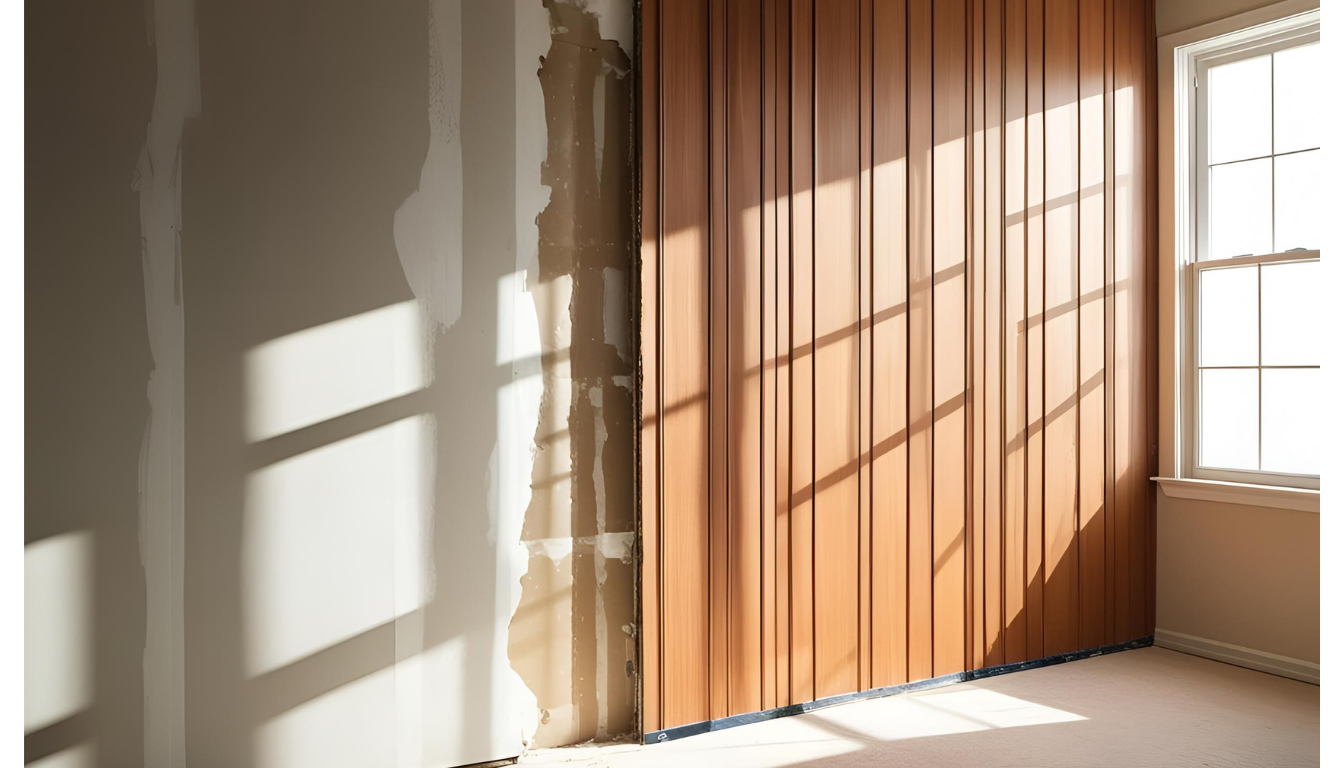Need professional help with your project?
Get quotes from top-rated pros.

The average cost to remove wood paneling ranges from $1,400 to $6,200, with most homeowners paying around $2,800. The total cost depends mainly on your room size, the type of paneling, and whether you choose DIY or professional removal.
While DIY removal can cost as little as $750 for basic tools and materials, complex jobs requiring professional help can reach up to $8,000. Understanding these costs upfront helps you budget accurately and decide whether to tackle the project yourself or hire a pro.
Understanding the costs involved in removing wood panels helps homeowners plan their remodeling budget effectively. The total expense varies based on several factors, from the size of the space to local labor rates. Here’s a comprehensive breakdown of what you can expect to pay for wood paneling removal in 2025.
The national average for removing wood paneling typically falls between $1,400 and $6,200, with most homeowners spending around $2,800. This cost includes labor, equipment, cleanup, and disposal of waste materials. Professional contractors typically handle everything from protecting adjacent surfaces to hauling away debris. When asbestos is found behind panels, costs can increase significantly due to specialized removal procedures.
Cost Breakdown by Project Size:
The square foot cost for removing wood panels varies depending on whether you choose DIY or professional installation. Labor typically runs between $2 and $4 per square foot, while materials and equipment add another $0.50 to $1 per square foot. Features like cabinets, windows, and other obstacles can increase the cost per square foot as they require more careful work around these areas.
Location significantly impacts removal costs due to variations in local labor rates and disposal fees. Urban areas tend to have higher costs due to increased contractor demand and stricter regulations about waste disposal. Rural areas might offer lower rates but may have fewer available companies to choose from.
The complexity of removing wood paneling depends on two things: how it was originally installed and what lies beneath. Understanding these factors helps estimate costs more accurately and plan for potential challenges during the removal process.
Different types of paneling require different removal approaches. Knotty pine and solid wood panels often need more careful handling to prevent damage to the wall behind. Some common types affect costs as follows:
Panel Types and Removal Difficulty:
How the paneling starts coming off during the first panel removal indicates the overall difficulty. Panels attached with nails typically require a pry bar and create nail holes that need filling. Adhesive-mounted panels often need more time and effort, as the glue can damage the wall surface, leading to additional repair costs.
The condition of what’s behind the paneling significantly impacts overall costs. Sometimes you’ll find just studs, while other times there might be plaster or sheetrock in good condition. There’s also a good chance of discovering issues like mold or damaged insulation, which require additional repairs. Having a carpenter inspect before starting can help estimate potential hidden costs.
The space where you’re working affects both time and cost. Larger rooms with high ceilings or difficult-to-reach areas require more planning and specialized equipment. Contractors need to protect the floor and covered furniture, which adds to the overall project cost. Social media platforms like Facebook often show examples of how room layout affects removal complexity.
Before starting a wood paneling removal project, understanding the complete cost structure helps avoid unexpected expenses. The total cost includes more than just labor and basic materials, especially when dealing with older installations that might hide issues like mold or damaged walls.
A basic set of tools is essential for removing wood panels safely and efficiently. The primary equipment includes a pry bar, protective gear, and cleanup supplies. For thorough protection of adjacent surfaces, you’ll need materials to cover the floor and nearby cabinets.
Basic Tool and Material Costs:
Carpenter and contractor rates vary based on experience and location. Professional removal includes planning, protecting windows and features, and ensuring proper disposal of waste. Labor costs typically account for 60-70% of the total project cost when dealing with attached panels, especially those with complex fasteners or glue.
Hauling away debris from wood panels requires proper planning. The cost varies based on the amount of waste and local disposal regulations. Some materials, like knotty pine or panels in good condition, can be recycled or sold on platforms like Facebook, reducing disposal costs.
After removing wood panels, there’s a good chance you’ll need to repair the wall beneath. Whether you find just studs or damaged sheetrock, these repairs add to the total cost. Installing new drywall or fixing plaster often becomes necessary, especially in older houses.
The decision between DIY and professional removal depends on various factors, including your skill level, available time, and the complexity of the installation. Here’s how the two approaches compare in terms of cost and effort.
Project Cost Comparison:
DIY removal starts with assessing the first panel to understand the attachment method. While you save on labor costs, the time investment can be significant. A typical room requires 15-25 hours of work, including cleanup and preparation of the space for new finishes like paint or drywall.
Professional help becomes crucial when dealing with challenging situations like asbestos concerns or complicated removals. Companies bring specialized equipment and experience in protecting adjacent surfaces. Contractors also know how to handle unexpected issues like insulation problems or structural concerns that might arise during removal.
Beyond the basic costs, several factors can increase expenses. The condition of the wall behind panels might require additional work. Professional estimates often include contingencies for these situations:
Common Hidden Costs:
The total project cost ultimately depends on these combined factors, making it essential to plan for both expected and unexpected expenses. Whether choosing DIY or professional removal, understanding these potential costs helps create a realistic budget.